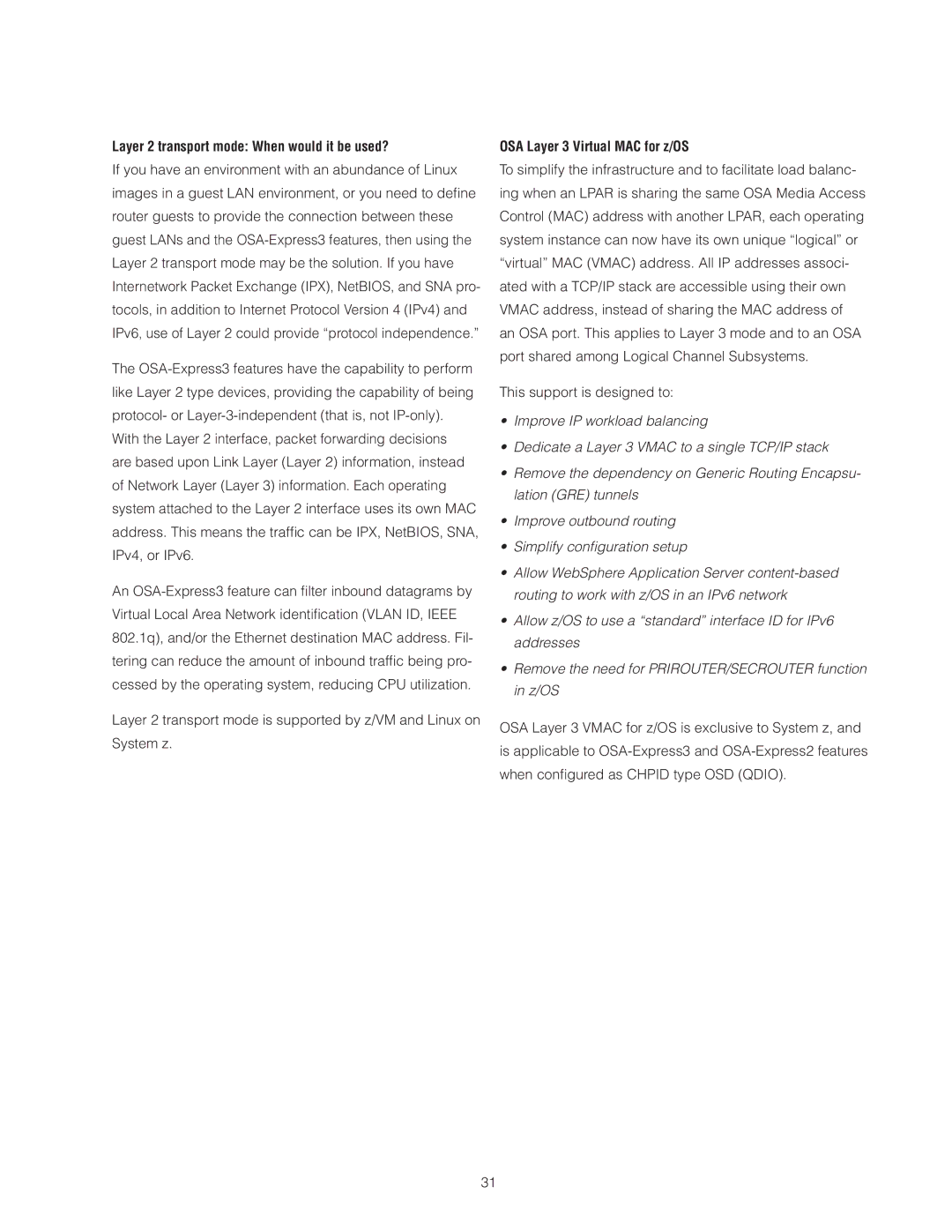Layer 2 transport mode: When would it be used?
If you have an environment with an abundance of Linux images in a guest LAN environment, or you need to defi ne router guests to provide the connection between these guest LANs and the
The
With the Layer 2 interface, packet forwarding decisions are based upon Link Layer (Layer 2) information, instead of Network Layer (Layer 3) information. Each operating system attached to the Layer 2 interface uses its own MAC address. This means the traffi c can be IPX, NetBIOS, SNA, IPv4, or IPv6.
An
Layer 2 transport mode is supported by z/VM and Linux on System z.
OSA Layer 3 Virtual MAC for z/OS
To simplify the infrastructure and to facilitate load balanc- ing when an LPAR is sharing the same OSA Media Access Control (MAC) address with another LPAR, each operating system instance can now have its own unique “logical” or “virtual” MAC (VMAC) address. All IP addresses associ- ated with a TCP/IP stack are accessible using their own VMAC address, instead of sharing the MAC address of an OSA port. This applies to Layer 3 mode and to an OSA port shared among Logical Channel Subsystems.
This support is designed to:
•Improve IP workload balancing
•Dedicate a Layer 3 VMAC to a single TCP/IP stack
•Remove the dependency on Generic Routing Encapsu- lation (GRE) tunnels
•Improve outbound routing
•Simplify confi guration setup
•Allow WebSphere Application Server
•Allow z/OS to use a “standard” interface ID for IPv6 addresses
•Remove the need for PRIROUTER/SECROUTER function in z/OS
OSA Layer 3 VMAC for z/OS is exclusive to System z, and is applicable to
31
